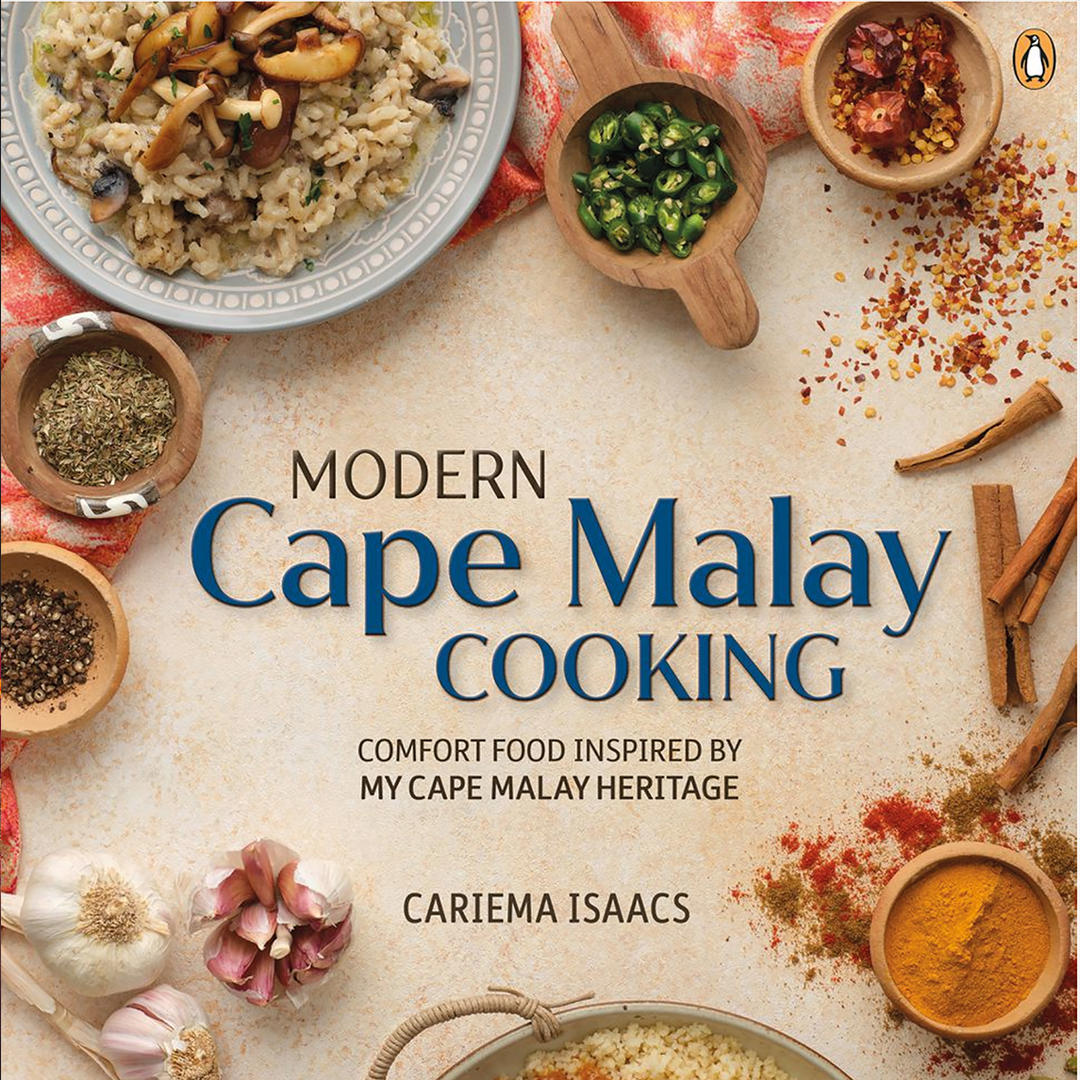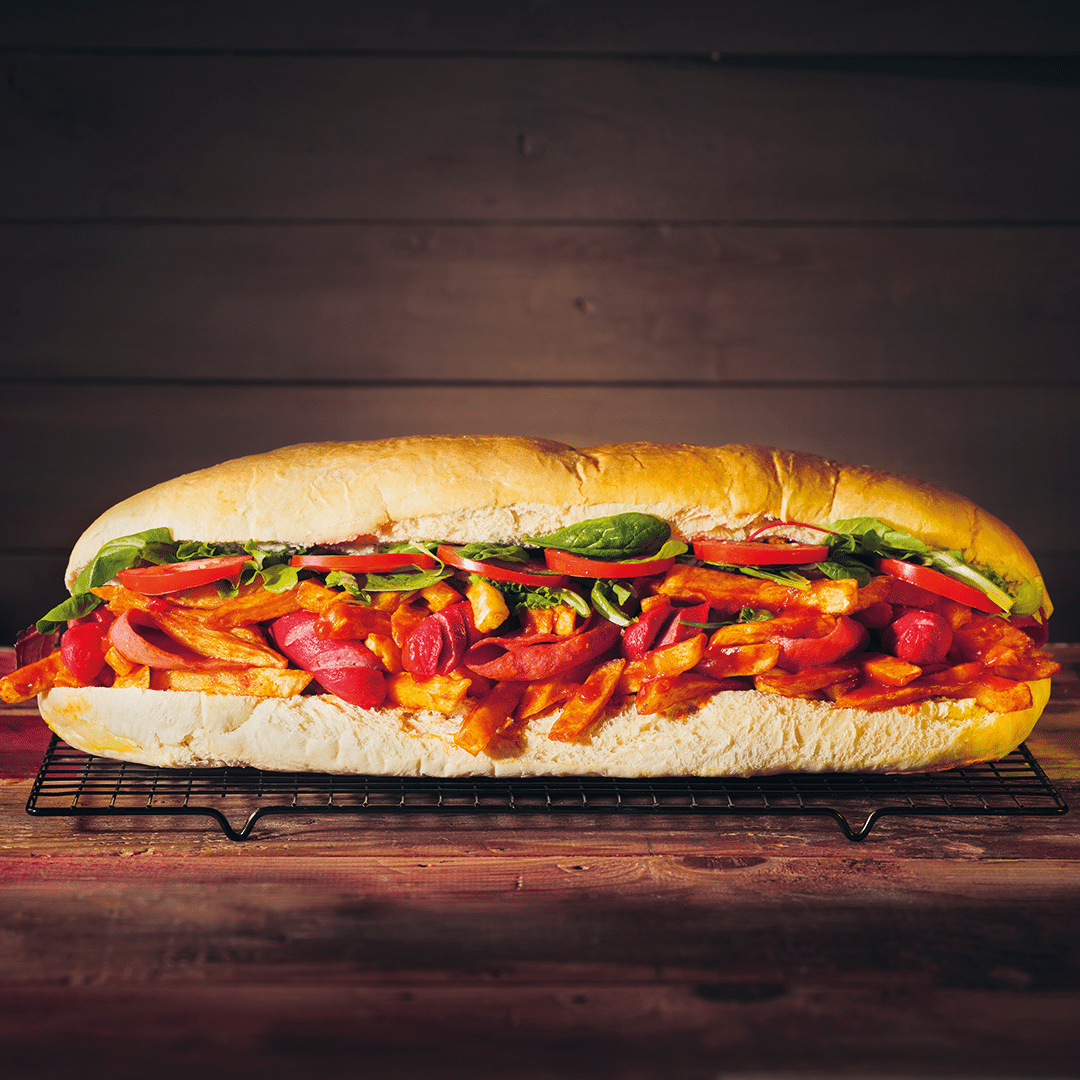Sjaan van der Ploeg explores layers of age-old culture within the pages of a new cookbook by legendary cook Cariema Isaacs.
Chef, food stylist and cookbook author Cariema Isaacs’s fourth cookbook, Modern Cape Malay Cooking, is fast becoming a staple in homes across South Africa. While reading this book, as someone unfamiliar with the Cape Malay way of life, I felt that unique sense of love, community and gratitude from the very first pages.
Cariema invites you in and you’re eager to pull up a chair. Every cookbook is precious to its author and each reader can resonate with the humble beginnings of a dish. But the way Cariema weaves family, friends and memories into this book brought out more emotion in me than I expected.

Despite the book being her story, Cariema made it clear that it is created by and for her community. In every chapter (if not on every page) Cariema takes a moment to pay tribute to someone or something special in her life.
With pages enrobed in colourful scarves, dusted in spices and scattered with handwritten notes, Modern Cape Malay Cooking invites you into Cariema’s childhood home to devour soetkoekies, stir a large pot of bubbling lamb curry with her Ouma, or bask in the afternoon sun while bottling zesty atchar. As much as you get a glimpse into Cariema’s history, you also learn about her life philosophy.
In a world that’s always playing in fast-forward, she honours the importance of slowing down, being conscious of how you act and being in control of the energy you share. From planting tiny coriander seeds to adding the freshly chopped leaves to your curry, she believes every step of the food process must be treated with intention, love and respect.
“I do not and cannot enter into cooking frivolously,” she writes. “I was taught that if the ingredients are respected and their origins are consciously acknowledged, a greater sense of compassion and comprehension is created. The energy I have while cooking is finally transmitted as my fingertips touch the ingredients and my entire approach to the dish becomes this expression of love and passion for the art of cooking and creating.”
Reading these thoughts certainly gave me pause. For so many, food is simply fuel, its availability taken for granted or enjoyed at a superficial level. Cariema’s approach to food is totally relatable. She writes that in the Cape Malay culture, it is this philosophy that continuously inspires them to share and feed others, no matter how little there is to go around.
Despite any differences in belief and routine, readers can connect with slowing down and uplifting others. When it comes to teaching the foundations of Cape Malay cuisine, Cariema shares the lessons she learnt early on.
“The two most significant lessons I was taught by my Ouma when cooking are as follows: don’t rush the process, and listen to the sounds of the ingredients when they are cooking.” This reminded me that changing your approach to how you cook, to slow down and be aware, tunes you into the smells and sounds of your food. They will tell you what they need and when.
“Heritage cuisine in South Africa is an integral part of the identity of our rainbow nation. In Cape Town, the street food culture is the heartbeat of the Mother City and the Gatsby remains the most iconic.”
Cape Malay food is built on layers of complex history, with special recipes passed down through generations. Cariema notes that it’s important to honour the traditional essence of the cuisine while also encouraging the younger generation to confidently contribute their modern twists and tastes.
Modern Cape Malay Cooking holds a lot of power for those who embrace the cultures behind the food. A blend of rich Malaysian, Indian and Indonesian heritage combined with the practise of Islamic food rules results in a loving, honest and vibrant buffet of flavour presented by a most generous host.
The iconic gatsby
Serves 6 // Total Time 40 Min

Ingredients
For the sauce
2 Tbsp vinegar
¼ cup tomato sauce
¼ cup sweet chilli sauce
½ Tbsp seasoning salt (Cariema used the Taj’s chips salt)
½ tsp peri-peri spice
1 tsp paprika
½ tsp roasted masala or curry powder
1 tsp white sugar (optional)
For the batter
8 cups canola or vegetable oil, for deep-frying
10 large potatoes, peeled and cut into chips and soaked in 3 cups water
16 slices French or garlic polony or 12 red viennas
1 large soft baguette, sliced down the centre but still intact at the back of the loaf
2 ripe tomatoes, sliced
6 iceberg lettuce leaves
Method
- For the sauce, mix all the ingredients together in a bowl and set aside.
- To prepare the cold meat and chips, prepare a large baking tray by placing sheets of paper towel on the bottom. This will assist in draining excess oil when transferring the hot chips from the oil.
- Also line a plate with paper towel. This will assist in draining excess oil when transferring the cold meats from the hot oil.
- Heat the oil in a large saucepan on high heat.
- In the meantime, drain the potato chips and pat them dry with a kitchen towel.
- Once the oil is hot, drop the raw potato chips into the oil and deep-fry for 15–20 minutes or until the chips are golden and tender.
- Remove the fried chips with a slotted spoon and transfer to the paper towel-lined baking tray.
- Drop the polony slices or viennas into the oil for just one minute and remove, then set aside on the paper towel-lined plate.
- Once most of the excess oil has been drained, transfer the chips into a large mixing bowl. 10. Pour the sauce over the chips and toss until the chips are well coated.
- To assemble, place the baguette on a cutting board while you assemble the sandwich. 12. Generously cover the bottom half of the bread with chips, spreading them out to cover the entire surface of the bread.
- Liberally place the fried polony or viennas on top of the chips. You can, at this stage, also add additional sauce of your choosing.
- Add the last layer of chips, then lettuce leaves and slices of tomato. Slice into six portions and serve.
Words by: Sjaan Van Der Ploeg
Photographs: Turhaan Samodien
Also read: Cape Malay fish sosaties




